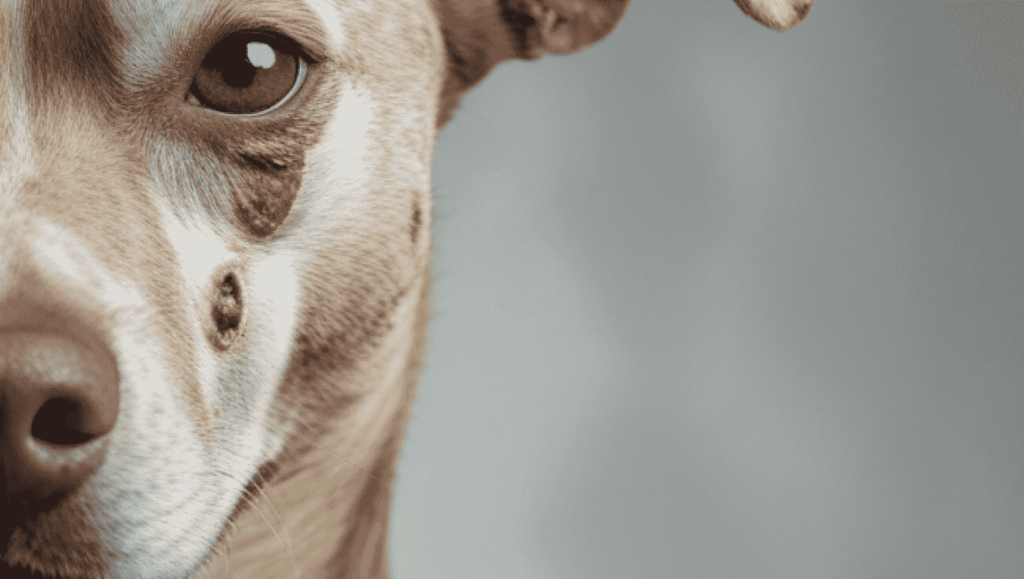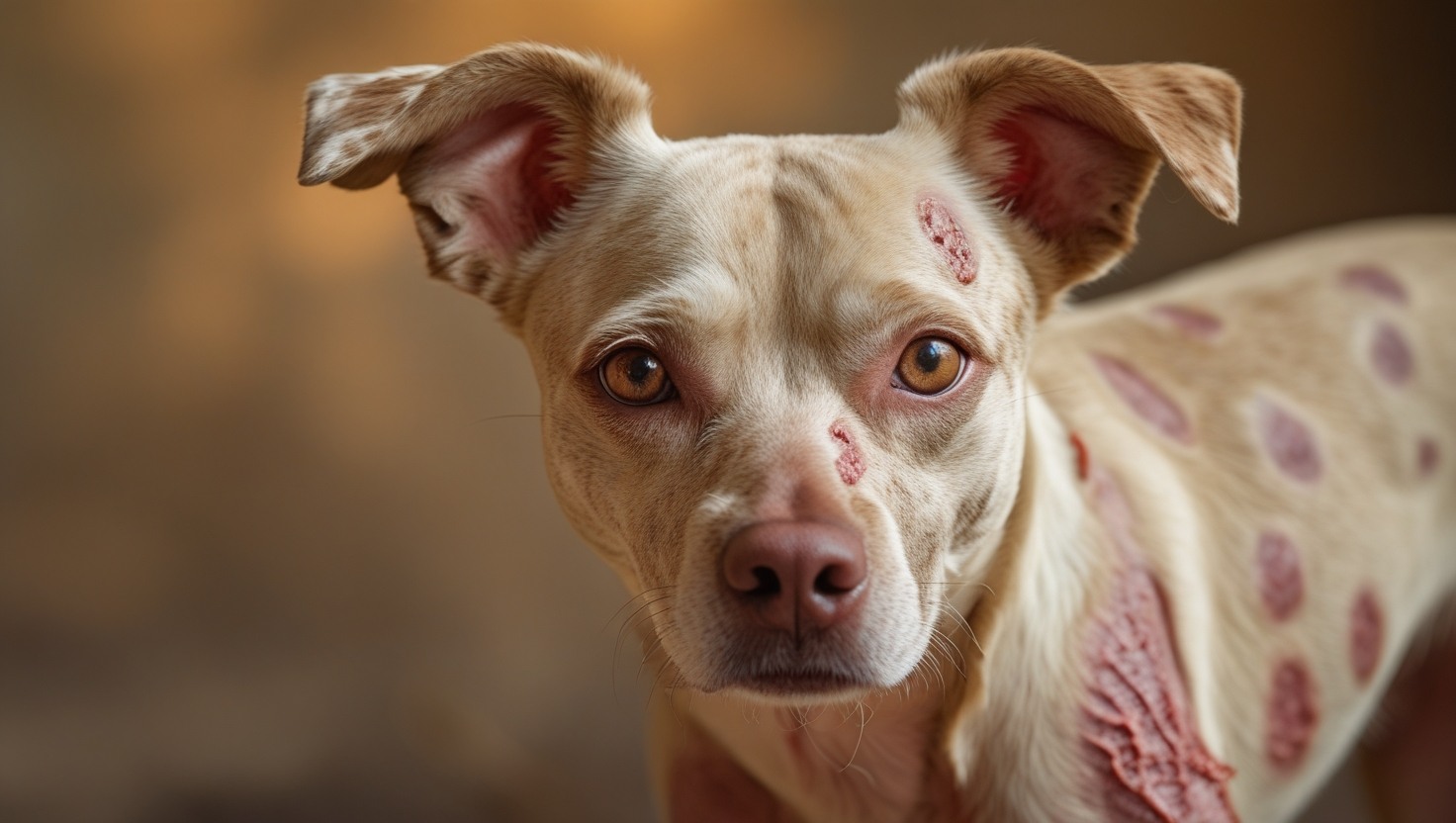What Does a Ringworm Look Like on a Dog?
 Ringworm in dogs appears as circular bald patches with red, scaly edges, often on the head, ears, paws, or legs. It’s highly contagious, spreads through contact, and requires prompt veterinary care and thorough cleaning to prevent reinfection.
Ringworm in dogs appears as circular bald patches with red, scaly edges, often on the head, ears, paws, or legs. It’s highly contagious, spreads through contact, and requires prompt veterinary care and thorough cleaning to prevent reinfection.
Understanding Ringworm in Dogs
Ringworm, despite its name, is not caused by a worm. It’s a fungal infection affecting the skin, hair, and nails in dogs and other domesticated animals. The condition, medically known as dermatophytosis, is caused by dermatophytes like Microsporum and Trichophyton, which feed on dead skin cells. It’s highly contagious and zoonotic, meaning it can spread between pets and people, making it important for pet parents to recognize and take prompt action. This infection can easily spread to cats, young pups, and even elderly dogs with weaker immune systems.
On a dog, ringworm often has a characteristic pattern of circular or semi-circular bald spots with red, raised, or scaly lesions. The edges may appear inflamed with a crusty coating or scarlet redness, sometimes accompanied by grey patches or scabs. It can affect various areas, including the head, ears, paws, and legs, leading to pruritus (itchiness), hyperpigmentation, or even nodular swellings. Though commonly noticeable, some dogs can remain asymptomatic, hiding the signs. Left untreated, the brittle hair, inflamed folds, and coating over affected areas can worsen, requiring a veterinarian’s care.
Ringworm shares similarities with athlete’s foot in humans, as both are caused by resilient fungi. Recognizing the classical appearance—like the round boundary and worm-like shape—is crucial in the battle against this condition.
Causes and How It Spreads
Ringworm in dogs is a contagious skin infection caused by a fungus. It doesn’t involve actual worms but forms red, circular lesions with scaly edges on the skin or fur. The infection spreads through direct contact with an infected animal, contaminated objects like brushes, toys, or bedding, and even surfaces like couches, carpets, and rugs. These fungus spores can survive for months, becoming trapped in fibers or on wooden surfaces, making the environment harder to clean. Towels, water bowls, and even dirt or soil outdoors can act as carriers, increasing the risk of exposure for your dog.
Dogs in kennels or shelters, particularly Boston Terriers, Yorkshire Terriers, and Russell Terriers, are genetically prone to the condition due to weaker immune systems or predisposed health factors. Puppies and older dogs are more likely to be affected, as their immune systems may struggle to fight the infection. Wounds, scratches, or even fleas can compromise the skin barrier, making it easier for the fungus to attach and cause localized or widespread lesions. If you notice visible symptoms, consult a veterinarian quickly, as untreated cases may result in re-infection or spread to people, including children, the elderly, or those undergoing chemotherapy or transplants. Using gloves, washing hands thoroughly, and disinfecting linens, furniture, and bedding can prevent further contamination.
Diagnosing Ringworm in Dogs
When a dog shows signs of ringworm, such as circular patches of hair loss, redness, and scaling on the skin, it’s crucial to act promptly. Ringworm is a contagious infection that can spread to other animals and humans. Visiting a veterinary hospital ensures proper treatment and helps protect your pet and household. A veterinary visit typically includes thorough physical examination of the affected areas for these characteristic findings.
To diagnose ringworm, vets often rely on several procedures. A Wood’s lamp, a special ultraviolet light, may be used at the bedside to identify hairs that fluoresce, a sign of Microsporum canis infection. However, this method is accurate in only about 72% of cases. For a definitive result, a fungal culture on DTM (dermatophyte test medium) is performed by taking scales or scabs from the affected areas. The culture can take 10-21 days to confirm a positive result, but it helps distinguish active lesions from contaminants or asymptomatic carriers.
Modern methods like PCR tests can detect the DNA of the fungus quickly, often in 3-5 days, providing a faster and more effective plan for treatment. A follow-up is always recommended to ensure the infection is completely cleared and to resolve any lingering microorganisms in the hair follicles.
Treatment Options for Your Dog’s Healing
When a pet is diagnosed with ringworm, it’s essential to act quickly to prevent it from spreading. Immediate actions, such as isolating the infected pet and cleaning any areas they frequent, play a crucial role in controlling the spread of the fungus. Treatments for this condition are widely available, and your vet will help you choose the best solution based on your dog’s condition and the severity of the problem.
For most cases, treatment is straightforward and involves addressing both the infected areas and the surrounding environment. Topical medications like anti-fungal creams, ointments, or lotions—containing miconazole, terbinafine, or clotrimazole—are commonly applied to the skin. In more persistent cases, oral systemic drugs such as griseofulvin or itraconazole may be prescribed by the veterinarian to combat the fungus from within. While these drugs are effective, their side effects vary, so it’s crucial to follow the vet’s instructions carefully.
In severe or recurring cases, a combination therapy might include medicated shampoos like chlorhexidine or lime-sulfur dips, typically applied weekly. Shaving fur around infected areas is also recommended to limit the spread of microscopic spores. Additionally, environmental decontamination is key—this includes cleaning furniture, floors, rugs, and other contaminated elements to avoid further contamination and reinfection. Regular clipping, proper disposal of infected hairs, and isolating the pooch in a separate room during the treatment are recommended steps.
Managing Contagion and Quarantine
Ringworm is highly contagious and spreads quickly, making it essential to limit contact between the infected dog and other family members, pets, or visitors. While your four-legged friend may show asymptomatic signs, the fungal spores are incredibly resilient, clinging to furnishings, carpets, bedding, and even curtains for a long time. These spores can survive on surfaces and fibers, making thorough cleaning a top priority. Ensure all grooming tools, toys, and living spaces are disinfected and cleaned regularly. Quarantine your dog in a single room with minimal exposure to other areas of your home, as this is critical to reduce the risk of reinfected pets or people.
To successfully eradicate the spread, clean soft furnishings and carpets using a vacuum equipped with a disposable bag, which should be emptied and burnt after use. Steam cleaning these areas can help remove trapped spores from fibers, and all items in contact with your dog, such as bedding, linens, and toys, should be washed with a strong disinfectant. The vet’s guidance is crucial during this period, as the treatment requires an ongoing approach of therapy, cleaning, and grooming for approximately six weeks to be successful. Following these aggressive measures can help ensure your home remains safe and free of contagious and potentially deadly illnesses.
Preventing Ringworm in Dogs
Keeping your pets safe from ringworm starts with vigilance. Even healthy-looking dogs can be silent carriers of fungal organisms, showing no signs of illness while still being contagious. If your dog has been diagnosed, it’s crucial to get them tested and start treatment promptly. A vet may take a culture of the affected skin to confirm the infection, which might appear as a red, ringed lesion.
Follow-up care is just as important as starting treatment. Depending on the severity, recovery can take weeks or even months. To ensure the infection has stopped, a veterinarian may recommend additional exams every 2-3 weeks and will provide clear instructions for at-home care. Regular cleaning and monitoring the progression of your pet’s recovery are essential.
Dogs that dig outside, especially in areas with abundant wildlife or soil exposure, are more prone to infections. To reduce risk, have your dog’s health evaluated twice yearly by a medical professional or doctor and ensure they are less susceptible by maintaining overall good health. If you suspect an infection, isolate your dog immediately and consult a vet for a thorough examination.
Stray dogs and cats are common sources of ringworm, so avoid contact with them. Infected animals should be isolated to prevent spreading the infection to other pets or a person in the household. Proper evaluation, monitoring, and timely treatment will keep everyone safe.
Kindly note: The content shared in this blog is gathered from online sources, some of which may not be verified. For accurate guidance on caring for your dog, it is recommended to seek advice from a qualified veterinarian.

